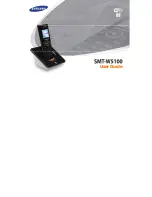
168
1054I-10.FM
Gigaset 1054 isdn, GBR: A30853-X200-B101-51-7619
10.06.1999
General Overview
To clean your base station and mobile component simply wipe it with a damp towel or antistatic
cloth. Never use a dry towel (danger of static electric build-up).
Standards
I-CTR3, CTR 6, CTR 10
Number of channels
120 Duplex channels
Frequencies
1.88 GHz to 1.90 GHz
Duplex method
Time duplex with 10 ms frame length
Channel raster
1728 kHz
Bitrate
1152 kbit / s
Modulation
GFSK
Encoding
32 - kBit (ADPCM)
Broadcast power
10 mW avg. power; 250 mW maximum power
Range
outdoors
ca.300 meters
indoors
ca.50 meters
Base station
Dimensions (L x Wx H)
approx. 175 x 182 x 35 mm (H x W x D)
Assembly
Wall adapter
Weight without power adapter
approx. 460 g
Power supply
220/230 V
~
/50 Hz ((AC power adapter)
22,2 V
~
/ 275 mA
Operational
+0° C to +55° C
environment (maximum):
20% to 75% relative humidity
Storage rtemperature
-10° C to +60° C
External line
Euro-ISDN-Base connection (IAE)
Protocol
DSS1
ChD
2 x 64 kBit and 1 x 16 kBit
Transfer rate
192 kBit/sec
Frame frequency
4 kHz
Internal a/b connections
Connection type
Miniwestern
Dialing method
DTMF/DPS (automatic)
Range
ca. 200 meters
Data transfer rate
28.000 / 9600 Bit/sec
Mobile component
Standard component Comfort component
Operational time with full
batteries
Full usage
approx. 7 hours
approx. 5 hours
Readiness
approx. 50 hours
approx 40 hours
Operational temperature
10° C to +55° C
0° C to +45° C
Weight with battery
approx. 190 g
approx. 190 g
Dimensions (L x Wx H)
175 x 55 x 25 mm
175 x 55 x 25 mm
If you leave the operational range of the base station during a call, then a warning tone will sound
“Leaving Operational Range“. The call quality will become poor, especially when you are moving.
You should return to the area of the base station to improve call quality. If you plan to leave the
operational range on purpose and plan to take your mobile unit with you, you should turn it off to
save the batteries.
Maintaining the System
Technical Data
Exceeding the Operational Range
















































